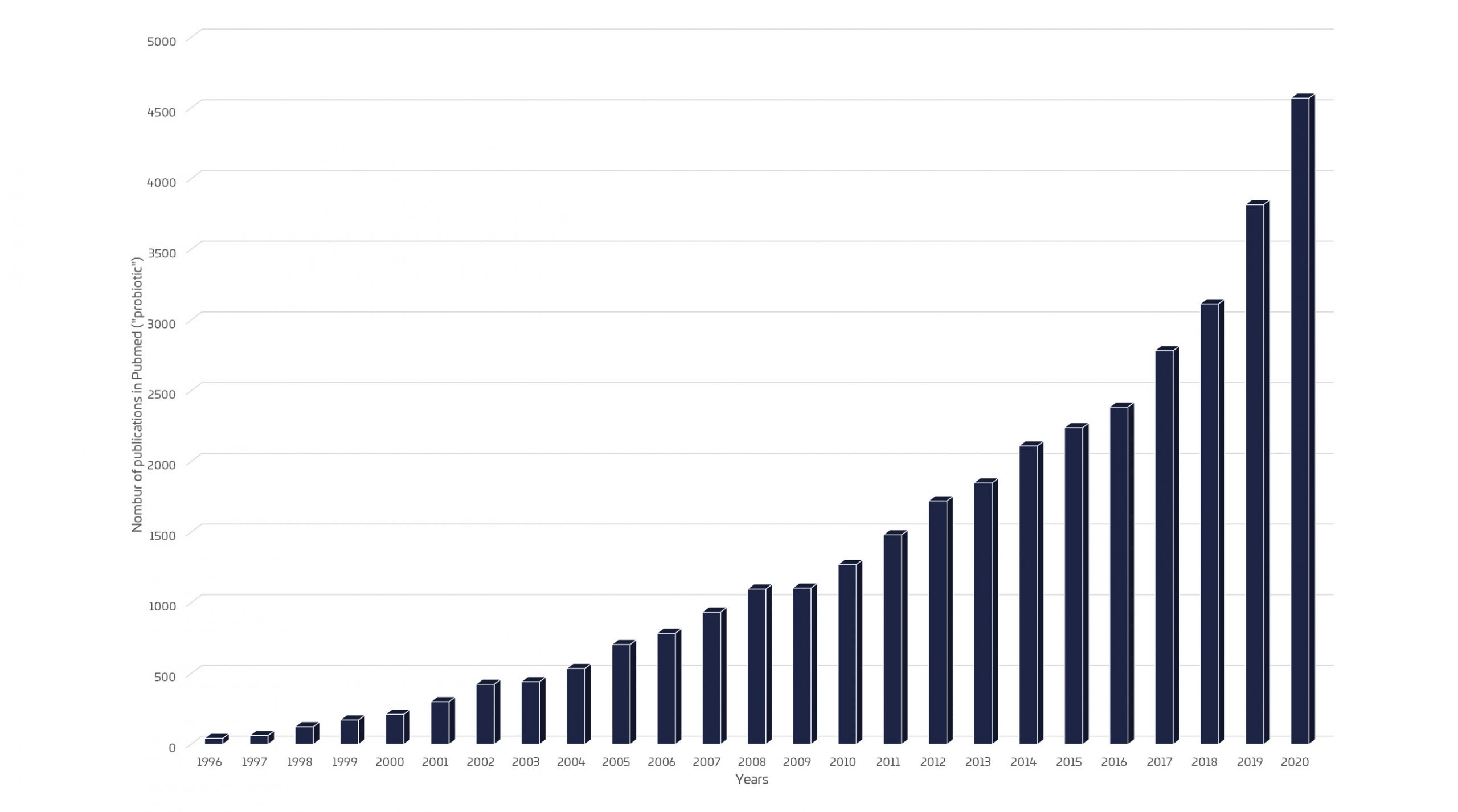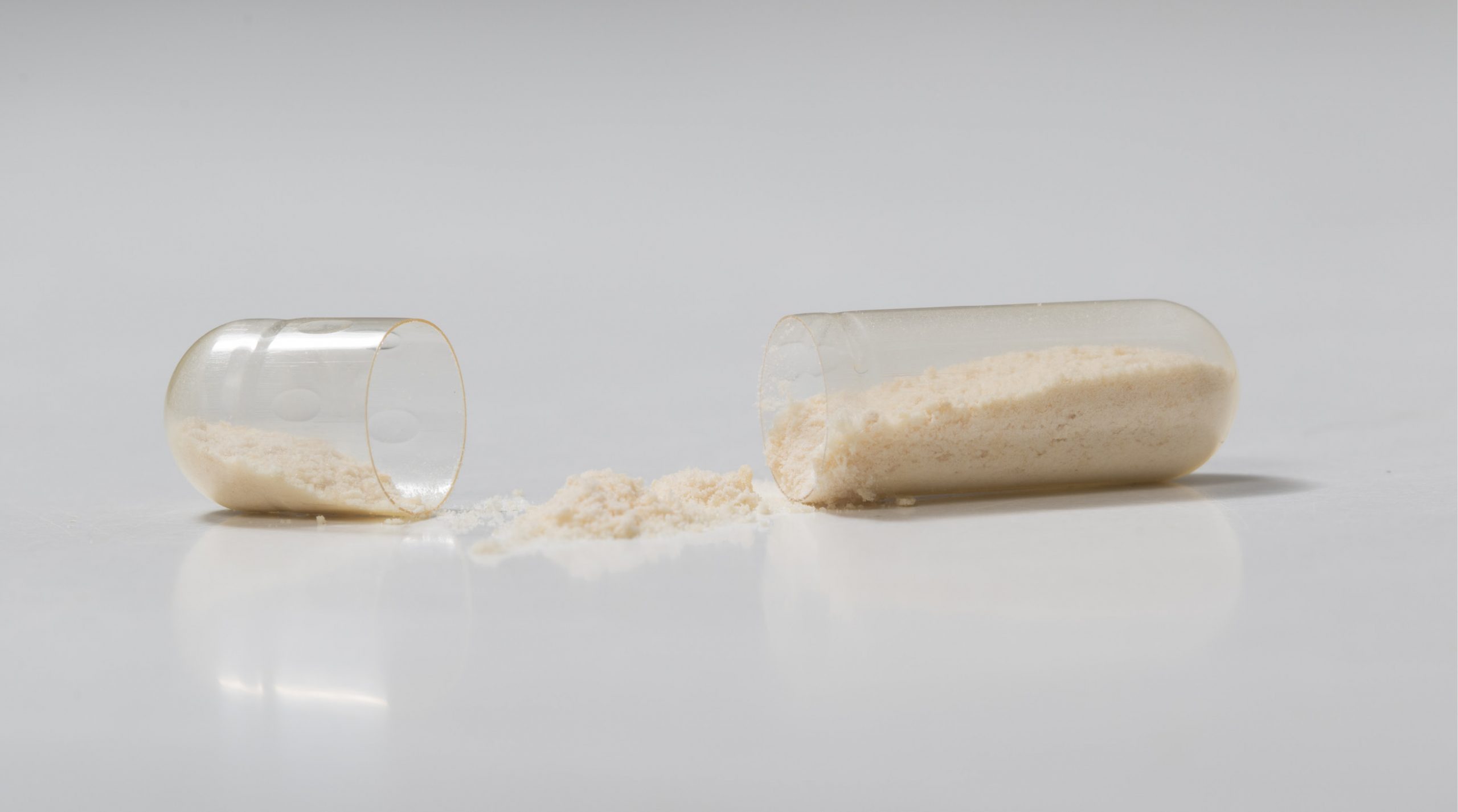Origin and evolution of probiotics : a growing field
A relatively old concept…
The origin of the “probiotic” concept is attributed to the Russian zoologist, bacteriologist and immunologist Elie Metchnikoff (1845-1916). Indeed, in 1907 he hypothesized that the long life of Bulgarian peasants could be explained by their consumption of yoghurt containing bacteria necessary for fermentation. He said : “the dependence of intestinal microbes on food makes it possible to adopt measures to modify the flora in our bodies and replace dangerous microbes with useful ones”.
… but in active research!
In 2001, the World Health Organization (WHO) and the Food and Agriculture Organization of the United Nations (FAO) gave an official definition of probiotics, which are “living microorganisms that, when ingested in sufficient quantities, exert positive effects on health beyond the traditional nutritional effects”. This definition, which is still valid today, may have to evolve since some research in recent years has shown that tyndallized microorganisms (killed by heat). They can also have beneficial effects on the host (e.g., stimulation of immunity).
Although the concept of “probiotics” is relatively old, research on it is still in full swing. We can see on the histogram below:

Probiotics : a flourishing market
The global probiotics market is still booming. In 2015, it was $34 billion and in 2020 it is of $48 billion. For 2027, its forecast is about $75 billion, with an estimated annual growth of 6%.
In terms of product type, the global market in 2020 is dominated by the probiotic functional food and beverage segment. The probiotic medical and dietary supplements segment has the highest overall annual growth rate for the coming years. It can be sachets, capsules, tablets, …
Determining factors for a good probiotic formulation
Probiotic strains are sensitive to 3 main environmental factors: temperature, humidity and acidity.
The constraints related to the first 2 factors are mainly encountered during the manufacturing of the product and its conservation until ingestion (product conservation). To maximize the survival of the strains throughout the life of the product, , there are solutions. Ideally, the manufacturer uses ingredients with low Aw (Aw = water activity – it represents the available water in the product) and have a cool, dry working environment. The chosen packaging is also very important, being more or less hermetic to the external environmental conditions. Cool and dry transport and storage conditions are also important.
The last factor: acidity. It is encountered when the probiotic food supplement is ingested by the consumer and reaches the stomach (pH between 1.5 and 3!). Without any particular protection, it is generally more than 90% of the probiotic bacteria that are killed during its passage! It is easier to understand that a good probiotic food supplement is not measured by the number of different strains integrated in it.. But it measured by the quantity of strain(s). This ensures a sufficient number of survivors to exert a beneficial effect on the host and thus meet the current definition of probiotic!
Bibliographie:
Origine
Elie Metchnikoff et la réforme du yaourt bulgare de 1908 | Alimentarium
Marché
Global Probiotics Market: Share, size, trends and growth opportunities | Lumina Intelligence (lumina-intelligence.com)
Probiotics Market to Reach $75.9 billion by 2027. Growing at a CAGR of 5.6% From 2020 With COVID-19 Impact – Exclusive Report by Meticulous Research® (globenewswire.com)
Global Probiotics Market (2020 to 2025) – by Product Type, (globenewswire.com)
